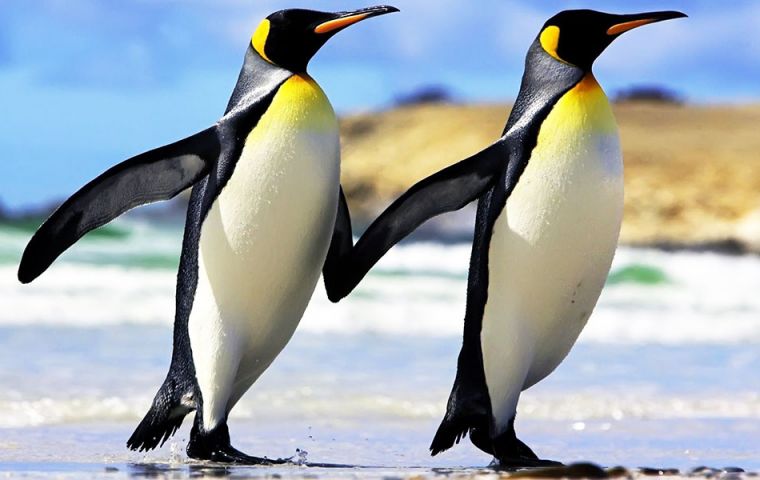MercoPress. South Atlantic News Agency
Growing concern over climate change impact on penguins
 “It's not happy news for the emperor penguin,” said Hal Caswell of the US Woods Hole Oceanographic Institution
“It's not happy news for the emperor penguin,” said Hal Caswell of the US Woods Hole Oceanographic Institution Global warming will cut Antarctica's 600,000-strong emperor penguin population by at least a fifth by 2100 as the sea ice on which the birds breed becomes less secure, a study said on Sunday.
The report urged governments to list the birds as endangered, even though populations in 45 known colonies were likely to rise slightly by 2050 before declining. Such a listing could impose restrictions on tourism and fishing companies.
The study is the first to project the long-term outlook for Antarctica's largest penguins, which can grow 1.2 meters tall, seeking to fill a gap in understanding climate change and wildlife in one of the remotest parts of the planet.
Overall, numbers were set to fall by at least 19% from current levels by 2100 as sea ice melts. And two-thirds of colonies of the birds, which have distinctive golden head patches, would decline by more than half, it said.
“It's not happy news for the emperor penguin,” said Hal Caswell of the US Woods Hole Oceanographic Institution, a co-author of the study in the journal Nature Climate Change.
Populations of most of 18 types of penguins are decreasing, according to a Red List run by conservation experts. Emperors are one of three species rated stable, with around 600,000 birds. Only king, adelie and chinstrap penguins are increasing.
The impact of climate change on penguins gets less attention than the effect on polar bears, which are often portrayed by scientists as victims of man-made warming and shrinking ice at the other end of the planet.
Despite rising global temperatures, sea ice around Antarctica has expanded in recent winters. More sea ice around a continent the size of the United States and Mexico combined tends to mean more shrimp-like krill, on which penguins feed.
But emperor penguins, which breed on sea ice with the males huddling together to keep eggs warm in winter darkness and temperatures down to minus 50 degrees Celsius (minus 58 Fahrenheit), are vulnerable to shifting sea ice.
“There is a goldilocks point for ice and emperor penguins,” said Phil Trathan, an expert at the British Antarctic Survey.
Too much ice means the females, which can travel 100 kms to the sea to catch fish, must waddle ever further. Too little ice means waves could break up colonies in spring



Top Comments
Disclaimer & comment rules-

-

-

Read all commentsI suppose, when you see two Emperors holding hands (pic.) you have to assume that they are displaying their proclivities.
Jul 01st, 2014 - 01:10 pm 0Phew! This could be more important than Global Warming, and would be a major reason for the population decline ;-)
And I thought they were displaying their dance steps! :o)
Jul 01st, 2014 - 05:19 pm 0Another contribution to the planet by the Anglo race. They are responsible for the warming.
Jul 02nd, 2014 - 01:26 pm 0Commenting for this story is now closed.
If you have a Facebook account, become a fan and comment on our Facebook Page!